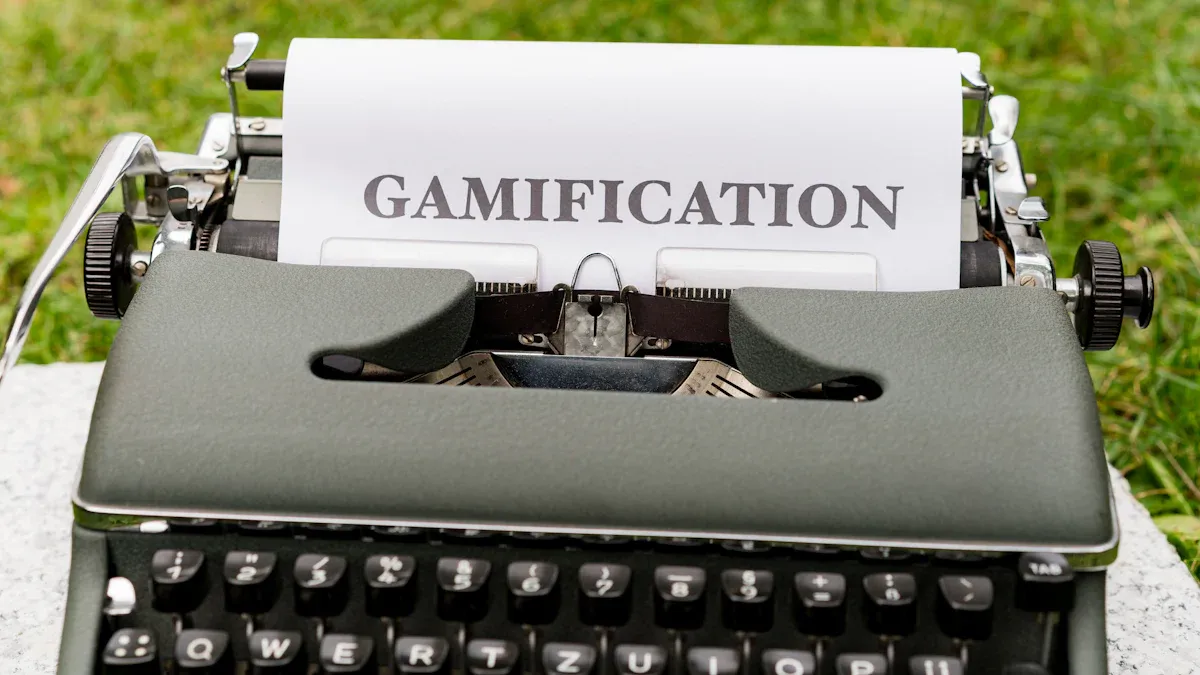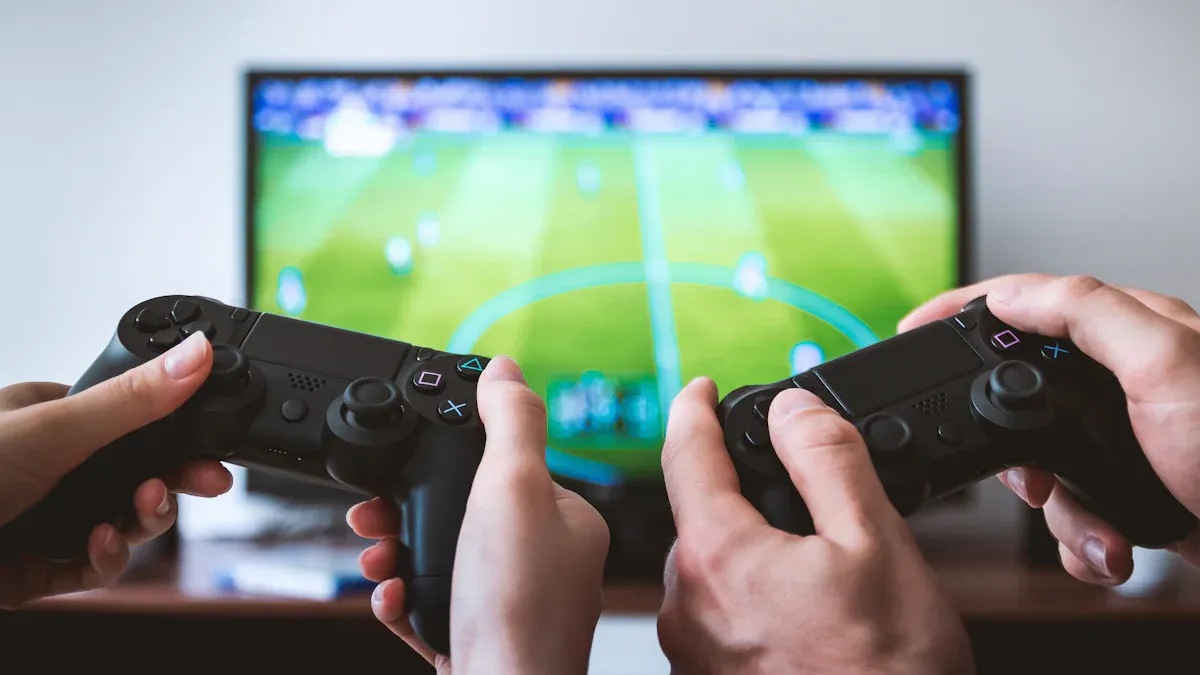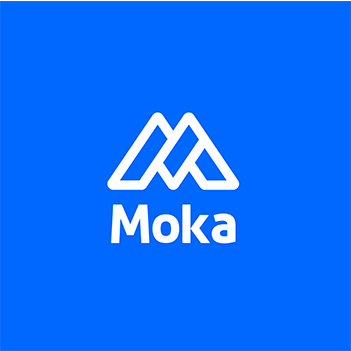Gamification in HR: Why It Works Wonders

Have you ever wondered why some HR practices feel dull while others spark excitement? That’s where gamification steps in. By adding game-like elements to everyday tasks, you can transform routine processes into engaging experiences. It’s not just fun—it works. Studies show that companies using gamified systems see a 48% boost in employee engagement. Plus, 90% of employees report feeling more productive when gamification is part of their work. Imagine the impact on your team’s morale and performance!
Gamification in HR: Does It Really Work? Absolutely. It taps into what motivates people, making work feel less like a chore and more like a challenge. Whether it’s earning points, climbing leaderboards, or unlocking badges, gamification creates a sense of achievement that drives results.
Key Takeaways
Gamification increases employee interest by up to 48%, making work fun and efficient.
Use game tools like points and leaderboards to inspire employees and make them feel successful.
Begin with small gamification steps, focusing on one task at a time for better results.
Ask employees for feedback often to improve the system and show they matter.
Don’t make gamification too competitive; create fair challenges that build teamwork.
Gamification in HR: Does It Really Work?
Defining Gamification in HR
Gamification in HR means adding game-like elements to your workplace processes. Think of it as turning tasks into challenges, where employees can earn rewards, complete levels, or even compete on leaderboards. It’s not just about fun—it’s about creating a sense of achievement and motivation. For example, a survey by SHRM found that 47% of HR professionals struggle with retention and turnover. Gamification can help tackle this by making work more engaging and rewarding.
Companies using gamified systems report impressive results. A study published in the Journal of Business Research found a 34% increase in employee motivation. Another report revealed that gamification boosts employee engagement by 48%. These numbers show how powerful gamification can be in transforming HR practices.

Core Principles of Gamification
Game Mechanics: Points, Badges, and Leaderboards
Game mechanics are the building blocks of gamification. Points, badges, and leaderboards create a sense of progress and competition. For instance, Salesforce saw a 25% increase in user adoption rates by adding gamified features. Employees feel rewarded for their efforts, which keeps them motivated.
Behavioral Psychology: Motivation and Engagement
Gamification taps into human psychology. People love challenges and rewards. By offering incentives like badges or recognition, you can boost morale and engagement. Gallup’s research shows that high-engagement teams achieve 21% greater profitability. When employees feel valued, they perform better.
Feedback Loops: Real-Time Progress Tracking
Feedback is crucial in gamification. Real-time tracking lets employees see their progress instantly. This keeps them focused and motivated. Microsoft used leaderboards in training and saw a 70% increase in knowledge retention. When employees know how they’re doing, they stay on track and aim higher.
Gamification in HR: Does It Really Work? Absolutely. By combining game mechanics, psychology, and feedback, you can create a workplace that’s both productive and enjoyable.
Benefits of Gamification in HR Practices

Recruitment
Attracting Top Talent Through Gamified Job Applications
Finding the right talent can feel like searching for a needle in a haystack. Gamification makes this process exciting for candidates and efficient for you. Imagine turning a job application into an interactive experience. Instead of filling out a boring form, candidates could complete a fun quiz or solve a puzzle that reflects the role’s challenges. This approach not only attracts top talent but also gives you a glimpse of their problem-solving skills and creativity. Companies like Unilever have used gamified applications to screen thousands of candidates, saving time while engaging applicants.
Assessing Skills with Gamified Challenges
Traditional interviews don’t always reveal a candidate’s true potential. Gamified challenges, on the other hand, let you see their skills in action. For example, coding competitions or role-specific games can help you assess technical abilities and decision-making skills. These challenges also make the process enjoyable for candidates, leaving a positive impression of your company. Plus, they ensure you’re hiring the best fit for the job.
Training and Development
Making Learning Interactive and Fun
Let’s face it—training sessions can sometimes feel like a chore. Gamification changes that. By adding elements like quizzes, rewards, and leaderboards, you can make learning enjoyable. Employees stay engaged and retain more information. For instance, gamified training programs have shown a 60% increase in engagement rates and an 80% completion rate. When learning feels like a game, everyone wins.
Encouraging Continuous Skill Development
Gamification doesn’t just make training fun; it keeps employees coming back for more. By offering badges or points for completing courses, you encourage continuous learning. Over time, this builds a culture of growth within your team. Companies that use gamified training have seen a 50% increase in employee retention and an average tenure jump from 1.8 to 3.5 years. That’s the power of making learning rewarding.
Metric | Result |
|---|---|
Engagement Rate | Increased by up to 60% |
Training Completion Rate | Rose from 30% to 80% |
Employee Retention Rate | Increased by 50% over three years |
Average Employee Tenure | Increased from 1.8 to 3.5 years |
Employee Engagement
Boosting Morale with Rewards and Recognition
Everyone loves being recognized for their efforts. Gamification makes this easy. By awarding points, badges, or even small prizes, you can boost morale and show employees their hard work matters. Recognition doesn’t just make people happy—it drives performance. Teams with high engagement levels are 21% more profitable, according to Gallup.
Fostering Collaboration Through Team-Based Challenges
Gamification isn’t just about individual rewards. Team-based challenges can bring employees together, fostering collaboration and camaraderie. Whether it’s a group project or a friendly competition, these activities build stronger relationships within your team. When employees work together toward a common goal, they feel more connected and motivated.
Real-World Examples of Gamification in HR

Recruitment Success Stories
Example: Google’s Code Jam for Hiring Developers
Google’s Code Jam is a prime example of gamification in recruitment. This global coding competition attracts top developers by challenging them to solve complex problems. Participants not only showcase their skills but also enjoy the thrill of competing against the best. For Google, it’s a win-win. They identify talented developers while creating a positive brand image among tech enthusiasts. This approach highlights how gamification can make recruitment exciting and effective.
Example: Marriott’s My Marriott Hotel Game
Marriott took a creative approach to recruitment with their "My Marriott Hotel" game. This simulation lets players manage a virtual hotel, tackling tasks like hiring staff and managing budgets. It’s not just a game—it’s a way to identify candidates with the right skills for the hospitality industry. The interactive nature of the game also leaves a lasting impression on potential employees, making Marriott stand out as an innovative employer.
Training and Development Case Studies
Example: Deloitte Leadership Academy
Deloitte transformed its training programs with gamification. The Leadership Academy introduced leaderboards, badges, and challenges to make learning engaging. This approach led to a 30% increase in engagement and improved retention rates. Employees felt motivated to complete courses, boosting their skills and productivity. Gamification in HR: Does It Really Work? Deloitte’s success proves it does.
Example: SAP’s Roadwarrior Game for Sales Training
SAP’s Roadwarrior game turned sales training into an adventure. This gamified program used real-world scenarios to teach sales strategies. The results were impressive—sales proficiency increased by 50%, and overall sales grew by 20%. By making training interactive, SAP ensured employees stayed engaged and applied their learning effectively.
Employee Engagement Initiatives
Example: Microsoft’s Language Quality Game
Microsoft used gamification to improve language quality in its products. Employees participated in a game where they identified and corrected language errors. This initiative not only enhanced product quality but also boosted employee engagement. Teams enjoyed the collaborative aspect, fostering a sense of accomplishment and teamwork.
Example: Cisco’s Social Media Training Program
Cisco gamified its social media training with quizzes, badges, and leaderboards. Employees learned how to use social platforms effectively while competing in a friendly environment. The program resulted in higher participation rates and better knowledge retention. Cisco’s approach shows how gamification can make even technical training enjoyable.

Tips for Implementing Gamification in HR
Start Small and Scale Gradually
You don’t need to overhaul your entire HR system overnight. Starting small is the key to success. Begin with one area, like training or recruitment, and introduce simple gamified elements such as quizzes or badges. Once you see positive results, scale up gradually. For example, Deloitte’s gamified learning program led to a 60% increase in learner engagement and a 50% reduction in training costs. By focusing on one initiative at a time, you can ensure smooth integration and avoid overwhelming your team.
Evidence Type | Description | Impact |
|---|---|---|
Case Study | Deloitte's gamification in learning | 60% increase in engagement |
Statistic | Gallup study on gamification | 14% increase in performance |
Statistic | Aberdeen Group report | 48% increase in retention |
Case Study | PwC's gamified learning platform | Over 90% participation |

Align Gamification with Business Goals
Gamification works best when it aligns with your company’s objectives. Think about what you want to achieve—better retention, higher engagement, or improved productivity—and design your gamified systems accordingly. For instance, TalentLMS found that 83% of employees felt more productive when work resembled a game. Similarly, Gallup reported a 14% boost in employee performance when gamification was tied to business goals. When your strategy matches your goals, you’ll see measurable results.
Study/Source | Key Findings | Impact |
|---|---|---|
TalentLMS | 83% of employees more productive | Increased productivity |
Gallup | 14% increase in performance | Enhanced metrics |
Deloitte | 60% increase in engagement | Improved learning outcomes |
Aberdeen Group | 48% increase in retention | Higher retention rates |

Use Technology to Enhance Gamification
Technology can take your gamification efforts to the next level. Platforms like TalentLMS and Salesforce offer tools to gamify training, recruitment, and performance tracking. These systems make it easy to implement features like leaderboards, real-time feedback, and interactive challenges. Companies using gamified technology have seen a 48% increase in engagement and a 50% rise in productivity. With tools like these, you can create a dynamic and engaging workplace.
Metric | Percentage |
|---|---|
Increase in employee engagement | 48% |
Employees finding learning more engaging | 30% |
Likelihood of employees staying with a company using gamification | 69% |
Preference for gamified work environments | 95% |

Gather Feedback and Continuously Improve
Gamification isn’t a one-and-done deal. To make it truly effective, you need to gather feedback and tweak your approach regularly. Think of it as fine-tuning a machine—small adjustments can lead to big improvements. Employees are your best source of insights. Ask them what’s working, what’s not, and what could be better. Their input can help you create a system that feels rewarding and fair.
Companies like Salesforce have nailed this by integrating regular feedback cycles into their gamified systems. They pair this with custom rewards to keep employees motivated. Platforms like Bonusly and Kazoo also use game-like elements to collect feedback while boosting engagement. This approach ensures that gamification evolves with your team’s needs.
Here’s how feedback impacts gamification success:
Metric | Impact on Engagement | Source |
|---|---|---|
Increased | Journal of Business Research | |
Employee Satisfaction | Enhanced | Journal of Business Research |
Performance Improvements | 34% increase | Journal of Business Research |
By keeping the lines of communication open, you can spot issues early and make changes before they become problems. Plus, when employees see their feedback being implemented, they feel valued. That’s a win-win for everyone.
Avoid Common Pitfalls, Such as Over-Competitiveness
While gamification can boost engagement, it’s important to strike the right balance. Over-competitiveness is one of the biggest risks. If challenges are too difficult or rewards feel out of reach, employees may feel anxious or discouraged. Instead of motivating them, you might end up alienating them.
To avoid this, focus on creating a system that’s inclusive and fair. Make sure everyone has a chance to succeed, regardless of their role or skill level. For example, instead of only rewarding top performers, consider recognizing milestones or team achievements. This fosters a sense of collaboration rather than rivalry.
Remember, the goal of gamification is to engage and inspire—not to create unnecessary stress. By designing challenges thoughtfully and keeping competition healthy, you can ensure your gamified systems bring out the best in your team.
Gamification in HR: Does It Really Work? Absolutely! It’s a game-changer for boosting engagement, motivation, and performance. By using game mechanics and tapping into human psychology, you can make HR processes more enjoyable and effective. Whether it’s recruitment, training, or employee engagement, gamification creates a win-win for everyone. Real-world examples prove its success, and with the right strategies, you can achieve the same. So, why not start small and see the wonders it can bring to your workplace?
FAQ
What is gamification in HR?
Gamification in HR means adding game-like elements to workplace processes. You can use points, badges, or leaderboards to make tasks engaging. It’s about turning work into a rewarding experience that motivates employees and boosts productivity.
How can gamification improve employee engagement?
Gamification creates excitement. Employees earn rewards, track progress, and feel recognized. This builds morale and keeps them motivated. Teams with high engagement often perform better and stay longer with their companies.
Is gamification expensive to implement?
Not necessarily! You can start small with simple tools like quizzes or badges. Many platforms offer affordable gamification features. Over time, the benefits—like higher retention and productivity—outweigh the costs.
Can gamification work for remote teams?
Absolutely! Online platforms make it easy to gamify tasks for remote teams. You can use virtual leaderboards, interactive challenges, and instant feedback to keep everyone connected and engaged.
What are the risks of gamification in HR?
Over-competitiveness can discourage employees. Keep challenges fair and inclusive. Focus on collaboration and recognition instead of rivalry. When done thoughtfully, gamification inspires rather than stresses your team.
See Also
Revolutionizing Recruitment Strategies With MokaHR's Unique Solutions
Enhancing Workforce Satisfaction With MokaHR's Management Tools
Achieving Hiring Excellence Through AI: MokaHR's Strategy
Boosting Employee Productivity With Effective Talent Management
From recruiting candidates to onboarding new team members, MokaHR gives your company everything you need to be great at hiring.
Subscribe for more information

